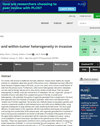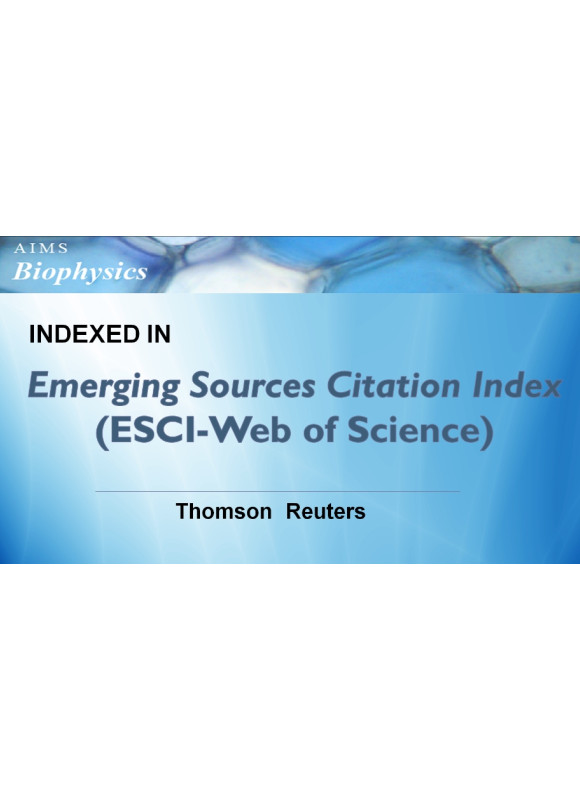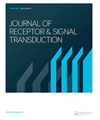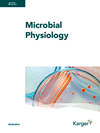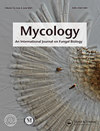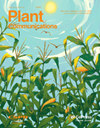Plos Computational BiologySCIE
國際簡稱:PLOS COMPUT BIOL 參考譯名:Plos 計算生物學
- 基本信息:
- ISSN:1553-7358
- E-ISSN:1553-7358
- 是否OA:開放
- 是否預警:否
- TOP期刊:是
- 出版信息:
- 出版地區:United States
- 出版商:Public Library of Science
- 出版語言:English
- 出版周期:Monthly
- 出版年份:2005
- 研究方向:Environmental Science-Ecology
- 評價信息:
- 影響因子:3.8
- H-index:138
- CiteScore指數:7.1
- SJR指數:1.652
- SNIP指數:1.085
- 發文數據:
- Gold OA文章占比:99.67%
- 研究類文章占比:98.90%
- 年發文量:637
- 自引率:0.0465...
- 開源占比:0.9896
- 出版撤稿占比:0
- 出版國人文章占比:0.04
- OA被引用占比:1
英文簡介Plos Computational Biology期刊介紹
PLOS Computational Biology features works of exceptional significance that further our understanding of living systems at all scales—from molecules and cells, to patient populations and ecosystems—through the application of computational methods. Readers include life and computational scientists, who can take the important findings presented here to the next level of discovery.
Research articles must be declared as belonging to a relevant section. More information about the sections can be found in the submission guidelines.
Research articles should model aspects of biological systems, demonstrate both methodological and scientific novelty, and provide profound new biological insights.
Generally, reliability and significance of biological discovery through computation should be validated and enriched by experimental studies. Inclusion of experimental validation is not required for publication, but should be referenced where possible. Inclusion of experimental validation of a modest biological discovery through computation does not render a manuscript suitable for PLOS Computational Biology.
Research articles specifically designated as Methods papers should describe outstanding methods of exceptional importance that have been shown, or have the promise to provide new biological insights. The method must already be widely adopted, or have the promise of wide adoption by a broad community of users. Enhancements to existing published methods will only be considered if those enhancements bring exceptional new capabilities.
期刊簡介Plos Computational Biology期刊介紹
《Plos Computational Biology》自2005出版以來,是一本生物學優秀雜志。致力于發表原創科學研究結果,并為生物學各個領域的原創研究提供一個展示平臺,以促進生物學領域的的進步。該刊鼓勵先進的、清晰的闡述,從廣泛的視角提供當前感興趣的研究主題的新見解,或審查多年來某個重要領域的所有重要發展。該期刊特色在于及時報道生物學領域的最新進展和新發現新突破等。該刊近一年未被列入預警期刊名單,目前已被權威數據庫SCIE收錄,得到了廣泛的認可。
該期刊投稿重要關注點:
Cite Score數據(2024年最新版)Plos Computational Biology Cite Score數據
- CiteScore:7.1
- SJR:1.652
- SNIP:1.085
| 學科類別 | 分區 | 排名 | 百分位 |
| 大類:Mathematics 小類:Modeling and Simulation | Q1 | 32 / 324 |
90% |
| 大類:Mathematics 小類:Ecology, Evolution, Behavior and Systematics | Q1 | 87 / 721 |
88% |
| 大類:Mathematics 小類:Computational Theory and Mathematics | Q1 | 23 / 176 |
87% |
| 大類:Mathematics 小類:Ecology | Q1 | 63 / 461 |
86% |
| 大類:Mathematics 小類:Genetics | Q2 | 97 / 347 |
72% |
| 大類:Mathematics 小類:Cellular and Molecular Neuroscience | Q2 | 34 / 97 |
65% |
| 大類:Mathematics 小類:Molecular Biology | Q2 | 163 / 410 |
60% |
CiteScore 是由Elsevier(愛思唯爾)推出的另一種評價期刊影響力的文獻計量指標。反映出一家期刊近期發表論文的年篇均引用次數。CiteScore以Scopus數據庫中收集的引文為基礎,針對的是前四年發表的論文的引文。CiteScore的意義在于,它可以為學術界提供一種新的、更全面、更客觀地評價期刊影響力的方法,而不僅僅是通過影響因子(IF)這一單一指標來評價。
中科院SCI分區Plos Computational Biology 中科院分區
| 大類學科 | 分區 | 小類學科 | 分區 |
| 生物學 | 2區 | BIOCHEMICAL RESEARCH METHODS 生化研究方法 MATHEMATICAL & COMPUTATIONAL BIOLOGY 數學與計算生物學 | 2區 2區 |
中科院分區表 是以客觀數據為基礎,運用科學計量學方法對國際、國內學術期刊依據影響力進行等級劃分的期刊評價標準。它為我國科研、教育機構的管理人員、科研工作者提供了一份評價國際學術期刊影響力的參考數據,得到了全國各地高校、科研機構的廣泛認可。
中科院分區表 將所有期刊按照一定指標劃分為1區、2區、3區、4區四個層次,類似于“優、良、及格”等。最開始,這個分區只是為了方便圖書管理及圖書情報領域的研究和期刊評估。之后中科院分區逐步發展成為了一種評價學術期刊質量的重要工具。
JCR分區Plos Computational Biology JCR分區
| 按JIF指標學科分區 | 收錄子集 | 分區 | 排名 | 百分位 |
| 學科:BIOCHEMICAL RESEARCH METHODS | SCIE | Q1 | 15 / 85 |
82.9% |
| 學科:MATHEMATICAL & COMPUTATIONAL BIOLOGY | SCIE | Q1 | 11 / 65 |
83.8% |
| 按JCI指標學科分區 | 收錄子集 | 分區 | 排名 | 百分位 |
| 學科:BIOCHEMICAL RESEARCH METHODS | SCIE | Q1 | 15 / 85 |
82.94% |
| 學科:MATHEMATICAL & COMPUTATIONAL BIOLOGY | SCIE | Q1 | 12 / 65 |
82.31% |
JCR分區的優勢在于它可以幫助讀者對學術文獻質量進行評估。不同學科的文章引用量可能存在較大的差異,此時單獨依靠影響因子(IF)評價期刊的質量可能是存在一定問題的。因此,JCR將期刊按照學科門類和影響因子分為不同的分區,這樣讀者可以根據自己的研究領域和需求選擇合適的期刊。
發文數據
- 國家/地區數量
- USA1072
- England323
- GERMANY (FED REP GER)284
- France170
- CHINA MAINLAND125
- Canada123
- Switzerland113
- Spain99
- Netherlands91
- Australia85
本刊中國學者近年發表論文
-
1、SurvivalPath:A R package for conducting personalized survival path mapping based on time-series survival data
Author: Shen, Lujun; Mo, Jinqing; Yang, Changsheng; Jiang, Yiquan; Ke, Liangru; Hou, Dan; Yan, Jingdong; Zhang, Tao; Fan, Weijun
Journal: PLOS COMPUTATIONAL BIOLOGY. 2023; Vol. 19, Issue 1, pp. -. DOI: 10.1371/journal.pcbi.1010830
-
2、A dual graph neural network for drug-drug interactions prediction based on molecular structure and interactions
Author: Ma, Mei; Lei, Xiujuan
Journal: PLOS COMPUTATIONAL BIOLOGY. 2023; Vol. 19, Issue 1, pp. -. DOI: 10.1371/journal.pcbi.1010812
-
3、HiSV: A control-free method for structural variation detection from Hi-C data
Author: Li, Junping; Gao, Lin; Ye, Yusen
Journal: PLOS COMPUTATIONAL BIOLOGY. 2023; Vol. 19, Issue 1, pp. -. DOI: 10.1371/journal.pcbi.1010760
-
4、A new model of Notch signalling: Control of Notch receptor cis-inhibition via Notch ligand dimers
Author: Chen, Daipeng M.; Forghany, Zary; Liu, Xinxin M.; Wang, Haijiang; Merks, Roeland M. H. M.; Baker, David
Journal: PLOS COMPUTATIONAL BIOLOGY. 2023; Vol. 19, Issue 1, pp. -. DOI: 10.1371/journal.pcbi.1010169
-
5、MGAE-DC: Predicting the synergistic effects of drug combinations through multi-channel graph autoencoders
Author: Zhang, Peng; Tu, Shikui
Journal: PLOS COMPUTATIONAL BIOLOGY. 2023; Vol. 19, Issue 3, pp. -. DOI: 10.1371/journal.pcbi.1010951
-
6、PCB: A pseudotemporal causality-based Bayesian approach to identify EMT-associated regulatory relationships of AS events and RBPs during breast cancer progression
Author: Sun, Liangjie; Qiu, Yushan; Ching, Wai-Ki; Zhao, Pu; Zou, Quan
Journal: PLOS COMPUTATIONAL BIOLOGY. 2023; Vol. 19, Issue 3, pp. -. DOI: 10.1371/journal.pcbi.1010939
-
7、Bioinspired figure-ground discrimination via visual motion smoothing
Author: Wu, Zhihua; Guo, Aike
Journal: PLOS COMPUTATIONAL BIOLOGY. 2023; Vol. 19, Issue 4, pp. -. DOI: 10.1371/journal.pcbi.1011077
-
8、Diverse role of NMDA receptors for dendritic integration of neural dynamics
Author: Tang, Yuanhong; Zhang, Xingyu; An, Lingling; Yu, Zhaofei; Liu, Jian K.
Journal: PLOS COMPUTATIONAL BIOLOGY. 2023; Vol. 19, Issue 4, pp. -. DOI: 10.1371/journal.pcbi.1011019
投稿常見問題
-
請問這本期刊屬于什么級別呢?可用于職稱評定嗎?
一般刊物只分省級、部級、核心,期刊本身是沒有幾類劃分的,具體是幾類或者幾級,您可以對照單位的分類文件確認一下。Plos Computational Biology雜志是由Public Library of Science出版的一本SCIE,可用于職稱評定。
-
你們能夠提供哪些核心期刊的咨詢服務?
大多數核心期刊我們都是可以提供咨詢服務的。目前核心期刊主要分為以下幾類:1.國內核心:按照權威度排序,社科類:南大核心>南大擴展>北大核心>科技核心 按照權威度排序。工科類:CSCD C庫>CSCD E庫(相當于CSCD擴展)>北大核心>科技核心。2.國外核心(全英文):按照權威度排序為:SSCI=SCI>EI>ISTP=CPCI。
-
想快速發表,可以加急嗎?
為了確保您的職稱評定順利進行,我們建議提前半年到一年開始準備,這樣能夠保證有充足的時間來處理所有相關事宜。如果客戶需要加急服務,我們會與雜志社進行溝通,以確定是否可以提供加急服務。請注意,如果確認可以加急,可能會收取一定的加急費用。
-
你們提供的服務可以確保稿件被發表嗎?
期刊編輯會綜合考慮多個因素,如發表范圍、學術價值和原創性等,對稿件進行綜合評估。盡管任何機構均無法保證每篇稿件都會被發表,但我們可以用專業知識和豐富經驗,協助您理解并遵循期刊的發表要求,從而提高您的稿件被發表的機率。
-
請問期刊發表的費用如何?
期刊發表的費用因期刊不同而異。根據您的需求,我們會為您推薦性價比最高的期刊,并提供專業的期刊供您選擇。一般來說,只要符合職稱要求,大多數作者都會選擇性價比最高的期刊作為意向期刊進行重點咨詢。我們會為您提供詳細的期刊信息和費用說明,以確保您能夠做出明智的選擇。
-
如果稿件被拒,未能成功發表,費用是否可以退還?
一般來說,我們推薦的期刊和您的專業方向、文章情況都是匹配的,極少出現稿件被拒的情況。如果稿件被拒,期刊編輯會提供詳細的拒稿信和建議,以幫助您了解拒稿原因并改進您的稿件。關于退款政策,具體情況可能因期刊不同而異,請您咨詢我們的工作人員以獲取詳細信息。
相關期刊推薦
熱門期刊推薦
-
Briefings In Bioinformatics
中科院 2區 JCR Q1
-
Computational And Structural Biotechnology Journal
中科院 2區 JCR Q2
-
Plant Physiology
中科院 1區 JCR Q1
-
Microbiological Research
中科院 1區 JCR Q1
-
Faseb Journal
中科院 2區 JCR Q1
-
Journal Of Molecular Cell Biology
中科院 2區 JCR Q2
-
Journal Of Plant Growth Regulation
中科院 3區 JCR Q1
-
Cell Communication And Signaling
中科院 2區 JCR Q1
